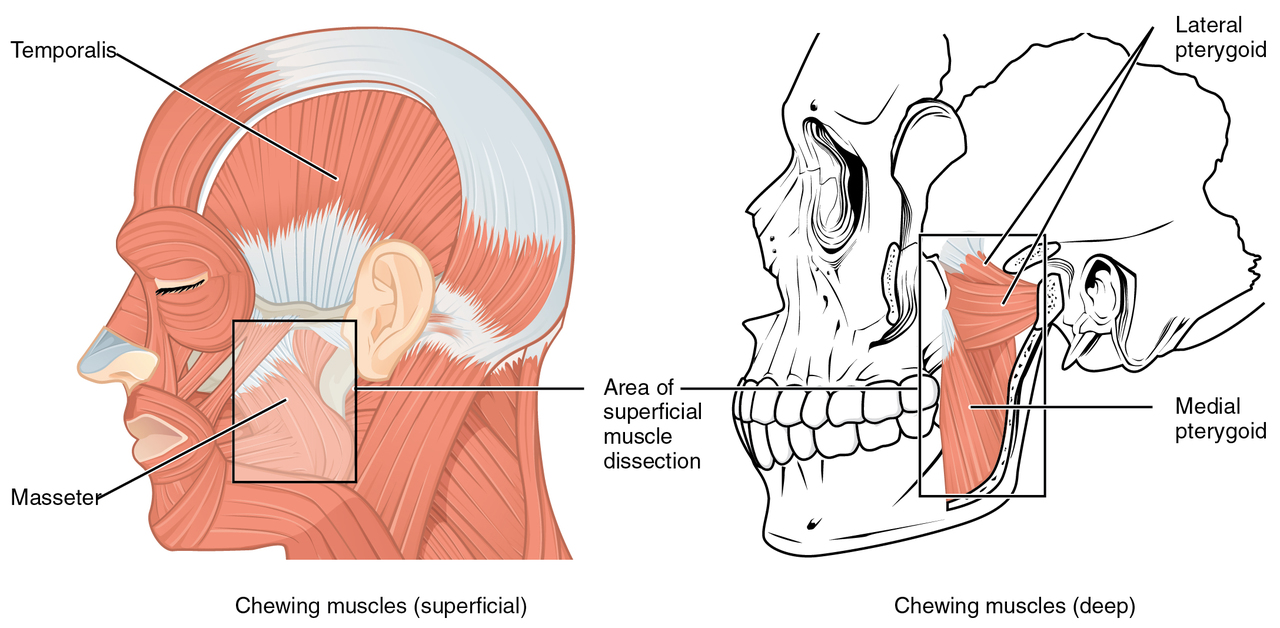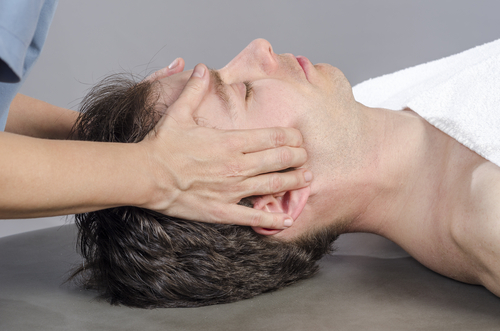March 24, 2020
The temporomandibular joints (TMJ), are created by our jaw bone (mandible) connecting to the skull, located near our ears. The mandibular bone rotates and glides to allow us to open and close our mouth, and is used every time we swallow, speak or chew. It is estimated that we use our TMJ 1,500-2,000 times a day. The joints are made up of the mandibular condyles and temporal mandibular fossas. Within the joints lies an interarticular disc, and on the outside of the joint is the joint capsule, ligaments and muscles. These structures function together to create the proper movement. When there is dysfunction in one or multiple systems, pain, clicking and/or catching can be present.

What causes the clicking or catching?
As noted above, the joints have an interarticular disc between the bones. The disc helps provide cushioning between the bones and allows for smooth movement. Normal movement of the TMJ is for the mandible to roll on the disc during the first part of mouth opening, then for the mandible and the disc to glide/slide together on the temporal articular eminence as the mouth opens wider. There can be impairments that cause the disc to be either anteriorly or posteriorly displaced. If the disc is not sitting in its proper anatomical position, the mandibular condyle will roll over the disc during mouth opening, causing it to ‘click’ as it rubs past and the disc relocated on top of the mandibular condyle. Often times there will be a reciprocating click as the mouth closes and disc slides back out from is normal position. This can cause pain, as well as an audible click.
If the disc is anteriorly or posterior displaced, it can also cause the jaw to lock, making it painful and difficult to open or close the mouth. Both the clicking and difficulty opening and closing can be treated through physical therapy techniques.
For our visual learners, click the video below.
Other causes of jaw and facial pain.
There can be several other causes of facial and jaw pain. Some of the more common ones that we treat are: irritation to the muscles of mastication (muscles used to chew), osteoarthritis in the TMJ, dysfunction in the muscles and joints of the cervical spine (neck), and poor posture. Each system involved can be treated using an individualized treatment plan.

How can physical therapy help?
Here at Portland Physical Therapy, we use a multimodal approach to treatment. We first perform a detailed examination to identify which structures are involved. Once we have identified the underlying cause(s) of your symptoms, we create a treatment plan tailored to each patient. This can include a combination of manual therapy, stretching, strengthening, postural re-education, and dry needling.

We also discuss activity modification, including dietary changes to reduce consumption of chewy foods, stress relieving techniques, and modifications to work and home environments to promote healthy postures. It is through a combination of these techniques that has led to successful treatment of our patient’s jaw and facial symptoms. If you or someone you know is suffering from jaw or fascial pain, contact our office to get scheduled for a consultation at 207-828-4455 or info@pptmaine.com. You shouldn’t have to live with your symptoms forever. Let us help you return to a pain free life.



